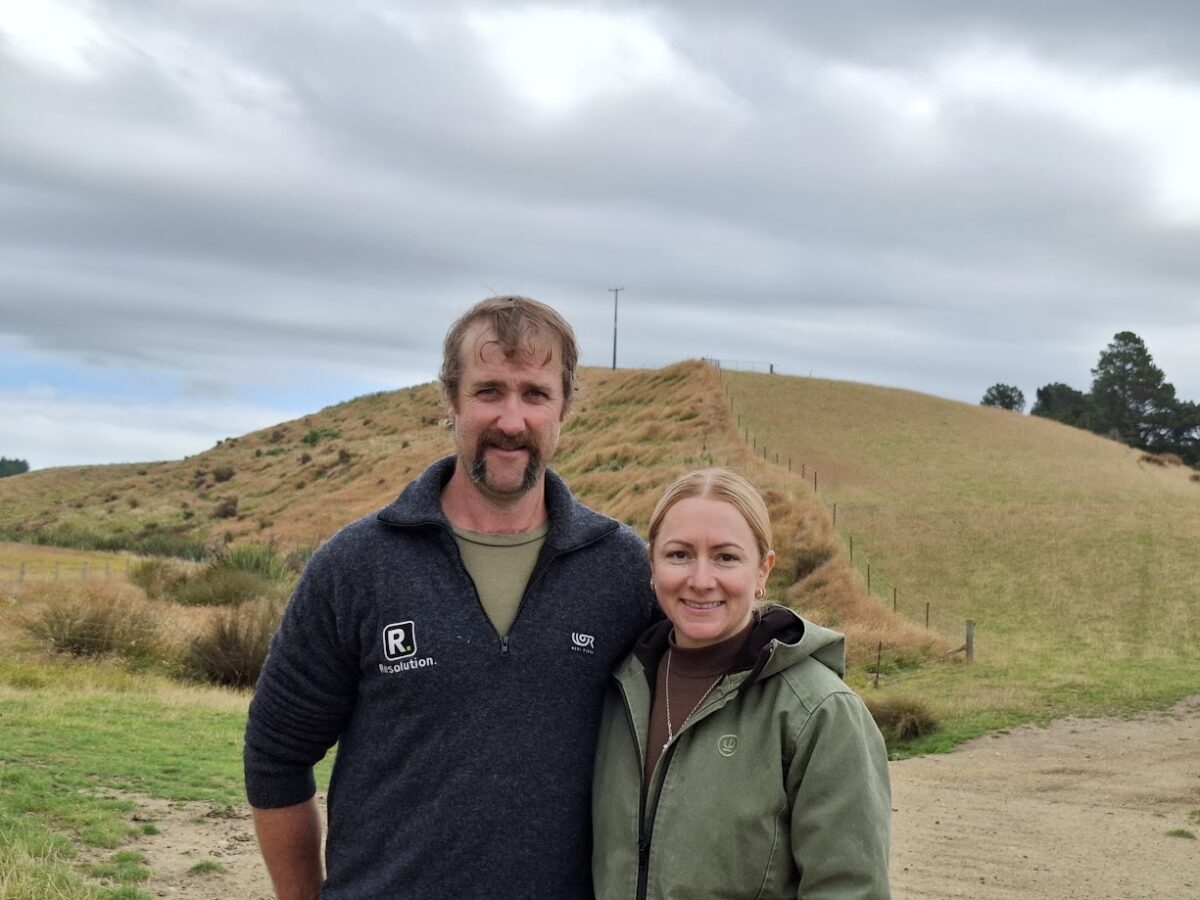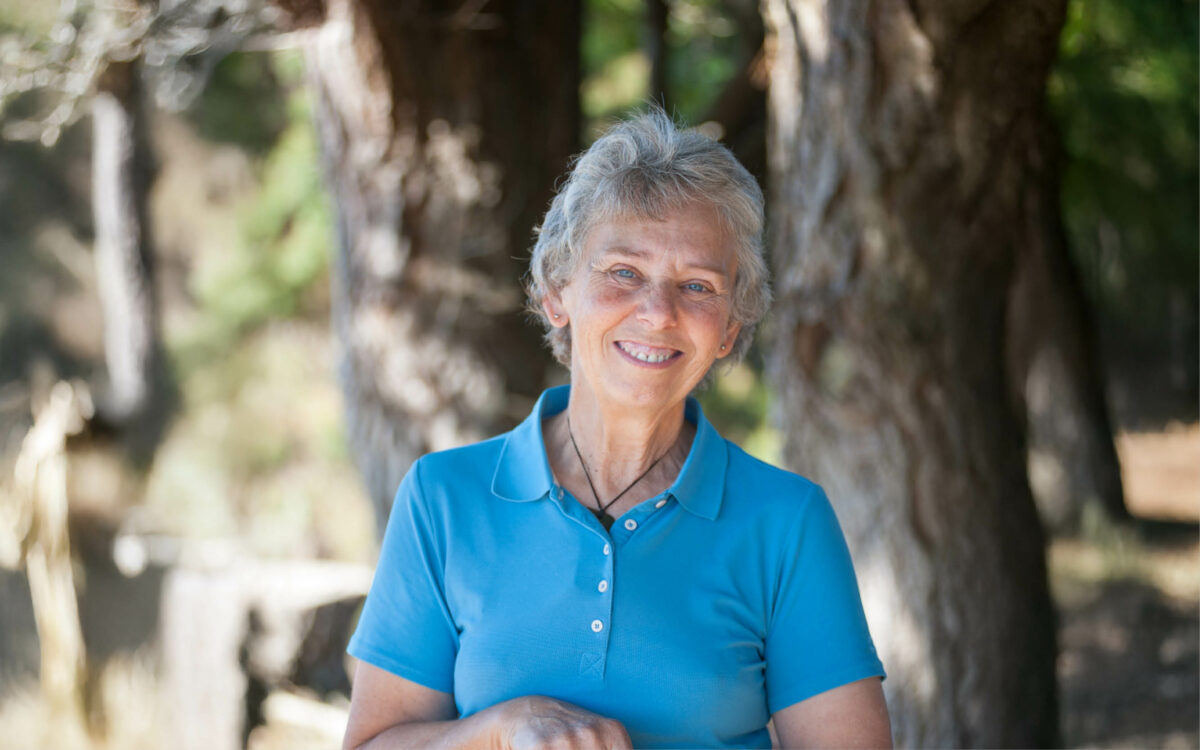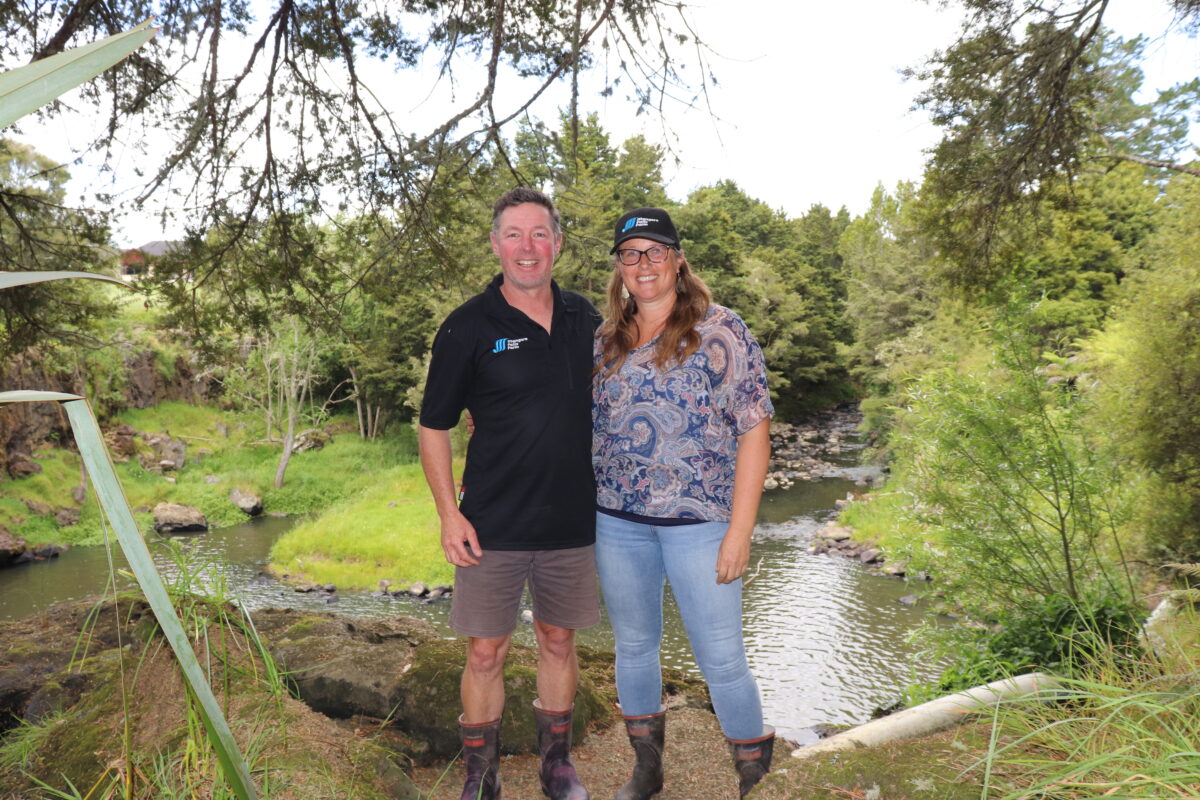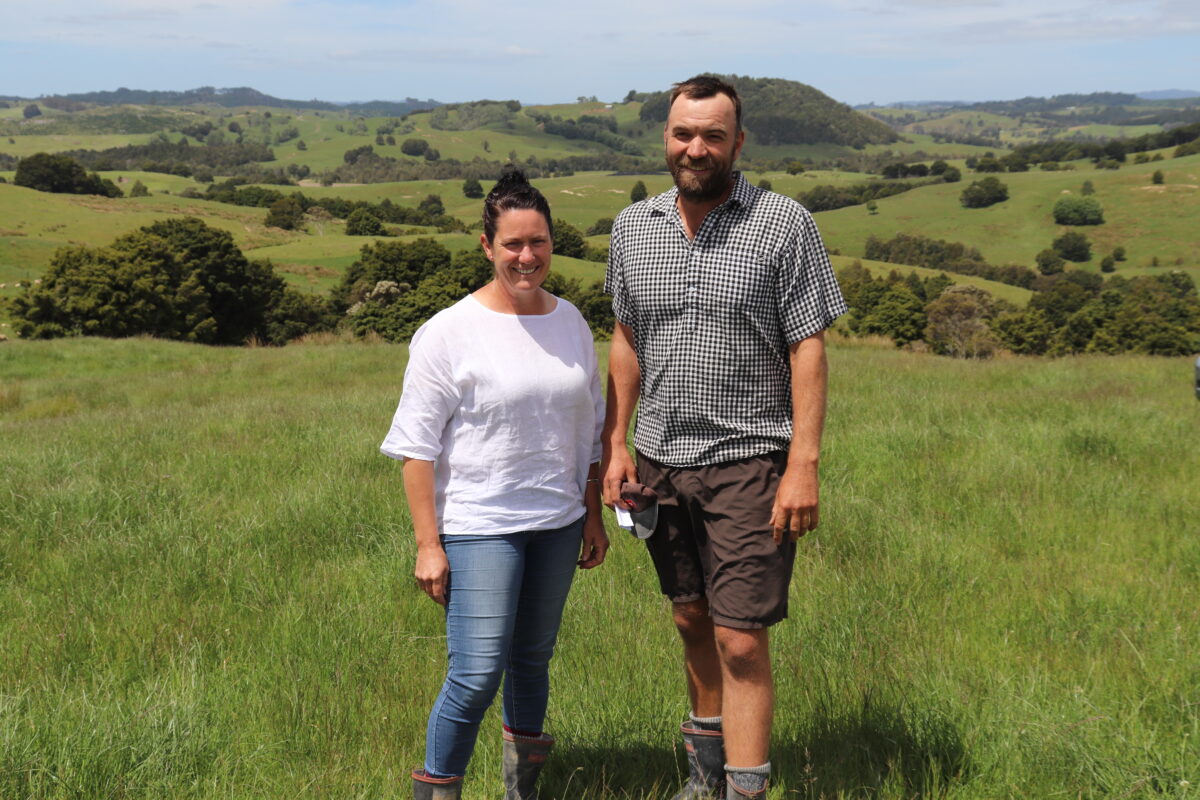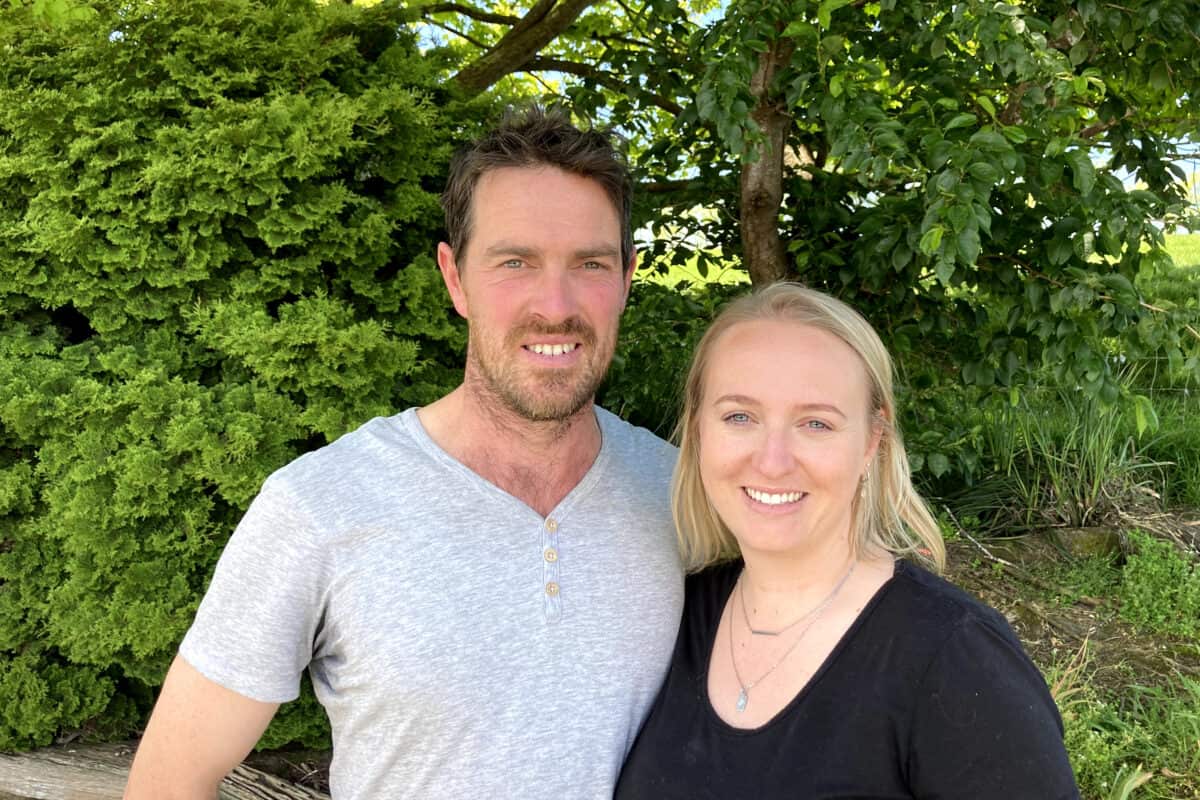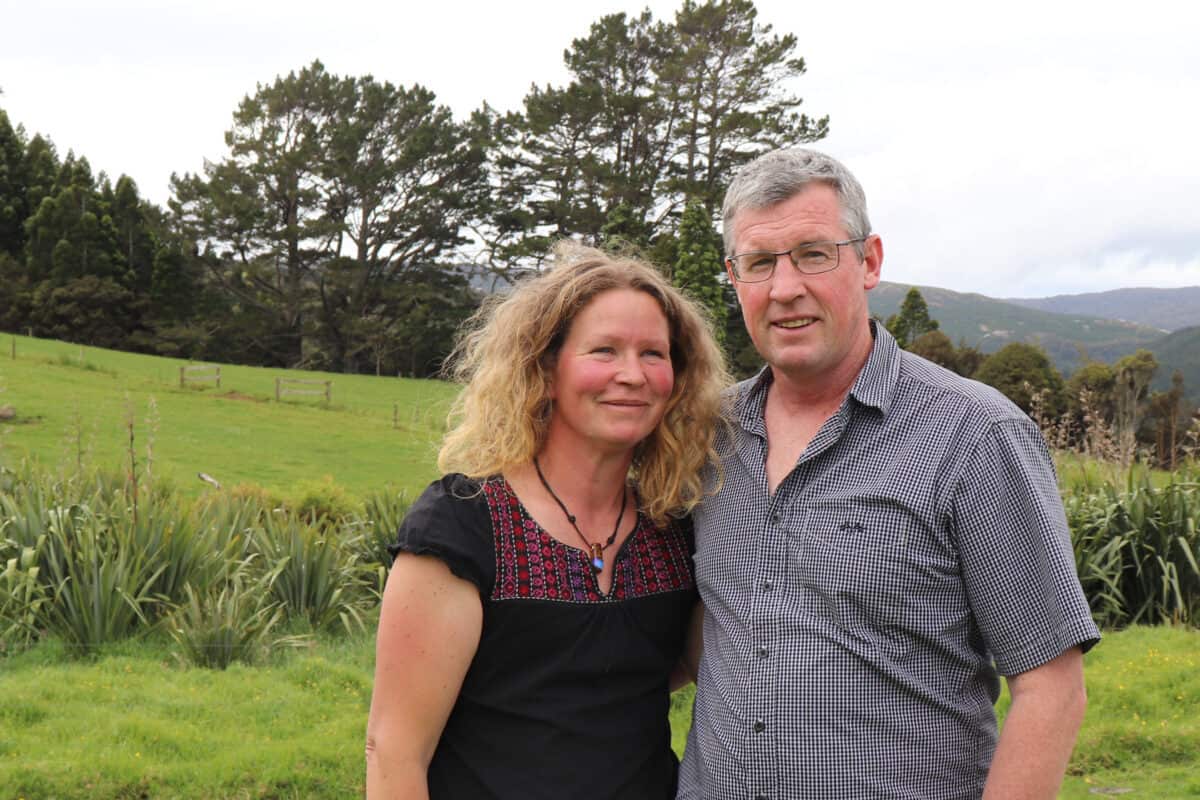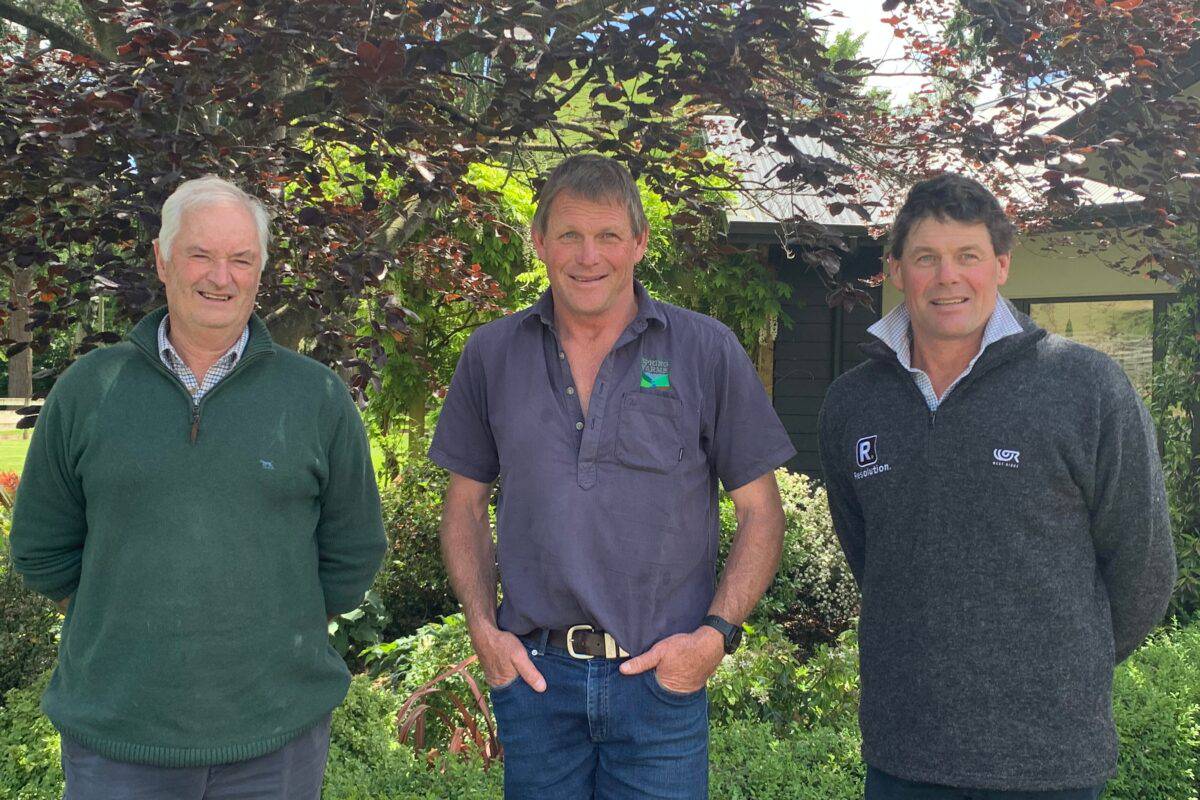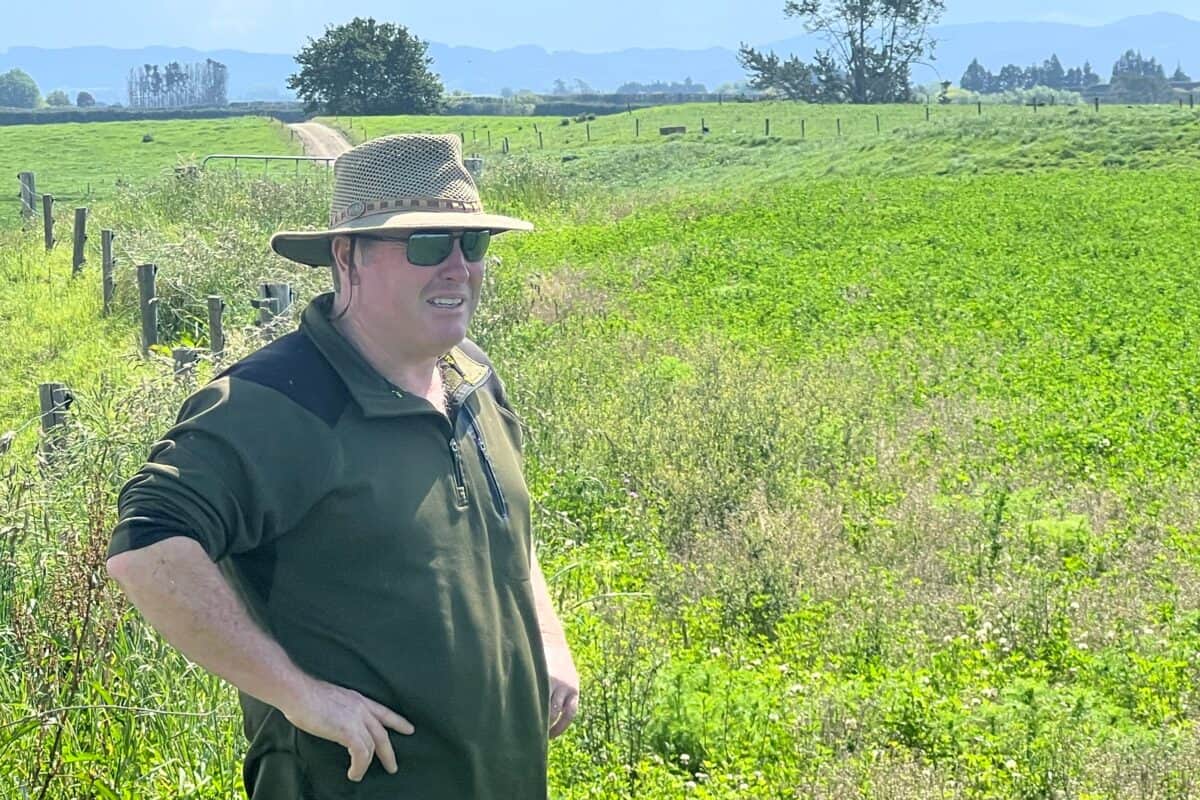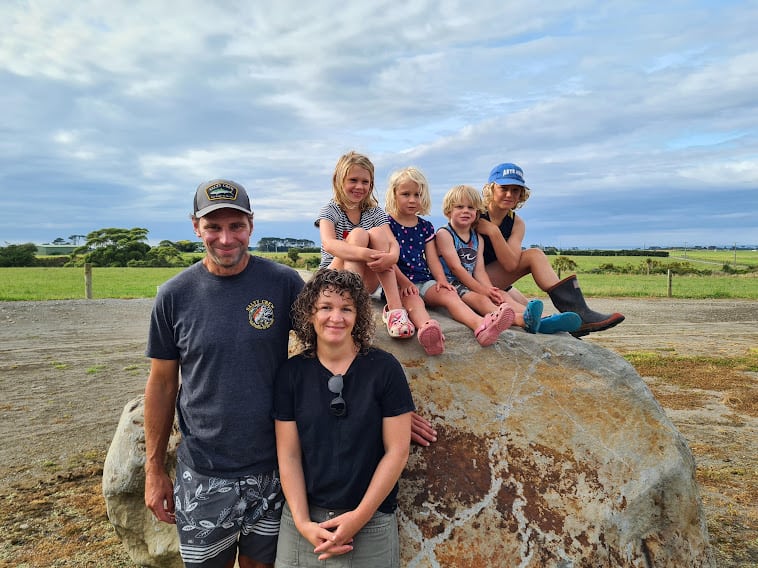Leon and Wendy Black
Blackdale Stud – Sheep farming
The Blacks have worked this land for almost 100 years, with Leon and Wendy now at the helm of one of the biggest family-run NZ stud sheep operations, grazing more than 5,000 animals on 370ha.
Blackdale Stud aims to produce the best sheep genetics in the country, attracting many visitors from around the world. Biosecurity is a major focus, running a closed flock, bringing in just a few sires every year, plus using AI.
Animal welfare is crucial with wide shelterbelts, and plenty of shade trees and water in every paddock. Two wintering sheds are used to feed and protect stock and pasture from the winter elements.
A data-led approach to management is used. Data collected includes testing sire groups for methane emissions, and continuously measuring nutrient loss.
Water quality improvements include water monitoring across the all-grass system, fencing off of waterways and the development of a wetland that is a nutrient trap and wonderful for birdlife.
John & Liz Chittock
The Salvation Army Jeff Farm – Sheep, Beef and Deer
Almost 70 years ago the late Edmund Jeff gifted his farm to the Salvation Army along with a vision of it being used to teach young people how to farm.
Under the guidance of John and Liz Chittock and their staff, up to five cadets at a time learn farm skills and contribute to Jeff Farm’s profitability and sustainability. They run about 17,000 sheep, contributing about 70% of the farm’s income. There are also 1,100 cattle and 1,300 deer.
Over the past 20 years, there’s been a focus on stock performance and environmental improvements with increasing profitability enabling the Salvation Army to spend more money on the farm’s many sustainability initiatives, and youth programmes.
Planting has resulted in thriving native areas, along with plenty of shelterbelts for stock protection. More planting is planned, particularly around fenced off waterways. Sediment catchment ponds have been developed as well as new reserves.
Hamish and Chantal McClean
Burwood Station – Sheep and Beef
Hamish and Chantal run a total of 28,000 stock units across Burwood Station. They get 75% of their income from sheep, about 20% from beef and the remainder from the 70,000kg of wool they produce each year. They finish all their beef and up to 80% of lambs.
The couple has grown the property over time, gradually adding two more blocks since coming to the station in 2005. The property is well maintained and is gorse and broom free.
Animal health is a top priority and the McCleans have a number of strategies to keep the stock in good condition, including feeding their ewes silage and grain at mating time, while maintaining production and growing less winter crops.
Soil and pastures are carefully managed to ensure they produce the best possible food for the animals. Many waterways have been fenced off and paddocks have been subdivided to improve management.
Matt and Kate McLaren
Camp-Hill Farming – Sheep and Dairy Support
Matt and Kate McLaren established Camp-Hill Farming in 2016 on the property bought by Matt’s great-great-grandfather in 1870.
The McLarens last season mated 3,600 ewes and 1,000 hoggets, plus grazed 280 dairy heifers and finished trading cattle and lambs. The business gets about 75% of its income from sheep and about 20% from heifer grazing, with the balance split between such things as wool, rental and beef. They have been consistently lambing at about 150%.
An extensive fencing programme has subdivided paddocks and protected waterways and native riparian borders have been planted along creeks, plus a large area fronting the Mimihau river has been transformed with native plantings – creating a haven for wildlife and recreation.
A strong focus on basic pasture and nutrient management has resulted in improved pasture growth and animal health, plus boosted crop yields. A portable bridge that helps connect two of the properties, protecting both stock and waterways.
Alan & Jennifer Taylor
Oakridge Farm – Sheep, Beef and Arable
Jennifer and Alan Taylor have been at Oakridge Farm since 1972, with their children and grandchildren becoming an integral part of its operation as they have grown up.
Animals at the Mataura property are kept in top condition, thanks to careful stock management. The Taylors run 2,400 Romney ewes with 600 replacements across the 380ha Gore property, along with 50 weaner cattle and 80ha of cereal crops.
Knowledge of soil types is used to guide the rotation of crops and grass across the tidy farm. Livestock is grazed on 300ha, while 50ha is planted in oats for food production and a further 30ha grows barley for stock feed and seed.
Environmental sustainability is important to the family and they have a strong focus on water management, along with the creation and protection of biodiversity on the property. Recycling waste and looking after the family’s health and safety are also priorities.
Ben Worker & Jaime McCrostie
Eastbourne Dairy Farm – Dairy
Eastbourne Dairy Farm has a 164ha milking platform, along with 70ha of runoff and is under the guidance of sharemilkers Ben Worker and Jaime McCrostie who treat it like it’s their own.
Over eight years, much time and effort has been focused on improving the farms presentation and functionality has resulted in a tidy, well-organised farm that is achieving good production results.
They milk 470 cows that produce an average of more than 230,000kg of milk solids each year. By enhancing the quality of pasture, the team is also boosting the health of the herd – an aspect that is a continual focus.
Moving away from winter cropping they have started on a drainage and re-grassing plan across Eastbourne and are also creating buffers along waterways through riparian planting.
The health and safety of staff is another priority, with their management including good training and support.
Stu and Brooke Cameron
Valley View – Dairy
This property has been transformed from a conservative sheep and beef farm into a high-performing, sustainable, fully self-contained dairy operation.
Valley View now milks just over 1,600 cows across a 530ha milking platform, while 100ha is in crops and 275ha is used for runoff.
The Camerons use technologies such as soil moisture probes, mastitis detectors and heat detection tags, resulting in efficiency gains and easier management of such things as animal health and reproductive performance. Staff wellbeing, animal health and environmental management are all carefully monitored.
Effluent is well managed, with a tailored system that fits the environment and uses nutrients efficiently. Biosecurity initiatives include the double fencing of boundaries and meticulous closed herd management.
Riparian buffer zones have been established around waterways, protecting a significant wetland area. The large buffer zones were created as part of the conversion, enhancing biodiversity while ensuring the farm meets regulatory requirements.
Kevin Hall
Hollyvale Farms – Dairy Grazing and Beef Fattening
Hollyvale Farms winters almost 1,000 cows, plus has 270 heifer grazers and fattens 80 beef cattle. Investment has been made in tunnel houses for about 700 cows, complete with sawdust bedding and silage feeding facilities. For the heifers being wintered on grass, baleage grazing is carefully managed so soil is protected and the cows enjoy pleasant conditions.
Paddocks have been re-grassed, and the water supply improved. Waterways have been fenced off, natives planted, and retainment bunds installed. In 1982, one of the country’s first QEII National Trust covenants was created across about 60ha of the property.
Effluent is collected and stored, and liquid effluent is analysed for nutrient content and used to replace nutrients removed by silage harvest. When ground conditions are suitable, effluent is applied meticulously to ensure soil retains the nutrients.
Greenhouse gas emissions are monitored to ensure they meet industry reporting targets now and into the future.
Enter the Ballance Farm Environment Awards











